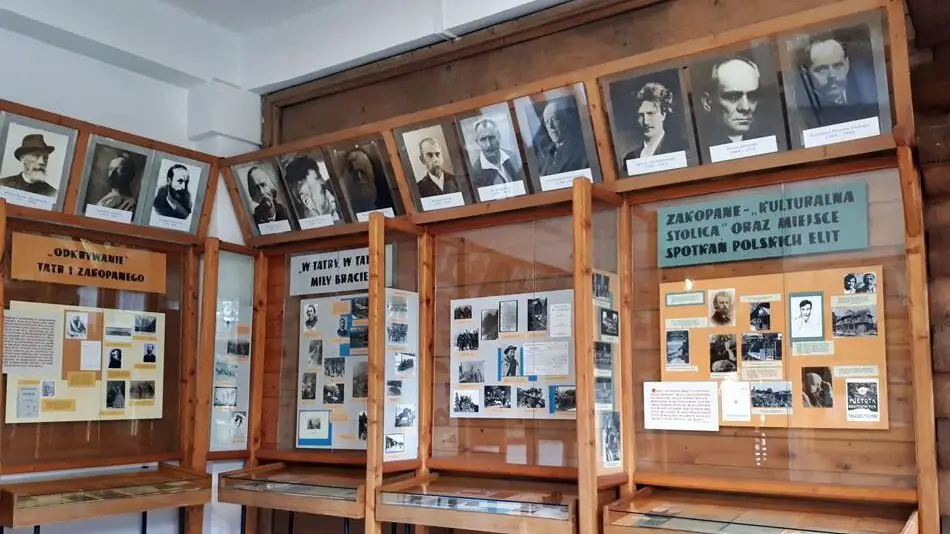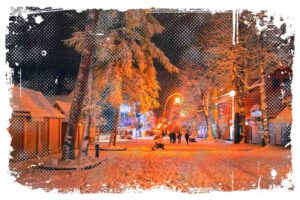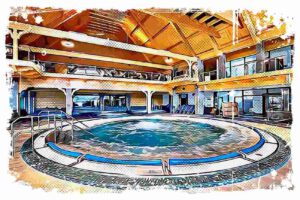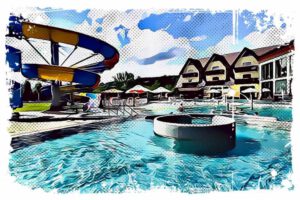You won’t regret visiting the Tytus Chałubiński Tatra Museum in Krupówki while exploring Zakopane, the Tatras and Podhale. Here you will find a collection of rocks, minerals, flora and fauna indigenous to the Tatras. Other sections of the museum house exhibit on the history and culture of Zakopane, as well as ethnography and art from Podhale, Spisz and Orawa. This museum is one of the oldest of its kind in Poland, so be sure to stop by and learn more about this special area.

Moreover, you may be curious to read my article about other fantastic sites located in Zakopane in close proximity to Krupówki.
Location of the Tatra Museum and it’s Branches
The Tatra Museum Dr. Tytus Chałubiński in Zakopane is one of the oldest and most extensive regional museums in Poland, attracting visitors from near and far. It consists of 11 different branches and sites located in Zakopane and other towns in Podhale, Spisz and Orawa, such as Chochołów, Łopuszna, Czarna Góra and Jurgów. You are invited to explore the different branches of the museum and the collections in each of them.

- Tatra Museum – the main building named after Dr. Tytus Chałubiński: Located at ul. Krupówki 10, this museum houses most of the collections and specimens available to tourists.
- Museum of Zakopane Style named after Stanislaw Witkiewicz: Located in the Villa „Koliba” at 18 Kościeliska St. in Zakopane, the museum documents architecture and interiors in the Zakopane style.
- Museum of Zakopane Style – the inspiration of Maria and Bronisława Dembowski: This branch is dedicated to the Zakopane Style and is located in Zakopane at Droga do Rojów 6.
- Władysław Hasior Gallery: This branch is dedicated to the outstanding Zakopane sculptor and is located in Zakopane at Jagiellońska 18 b.
- Włodzimierz and Jerzy Kulczycki Art Gallery: This branch is dedicated to the works of local artists and is located in Zakopane at Droga na Koziniec 8.
- Kornel Makuszyński Museum: This museum is dedicated to the work of Kornel Makuszyński and is located in the writer’s apartment at 15 Tetmajera St. in Zakopane.
- The Gallery of 20th Century Art in Zakopane: The gallery is located in the villa „Oksza” at 25 Zamoyskiego Street in Zakopane and is dedicated to architecture and interiors in the Zakopane and modern style.
- Museum of the Chochołów Uprising: Located in Chochołów at ul. 75 Chochołów, it documents the Chochołów Uprising.
- Tetmajer Manor in Łopuszna: This branch is dedicated to the Tetmajer family and is located at 2 Gorczańska Street in Łopuszna.
- Zagroda Korkoszów: This open-air museum presents a rich Spisz farm and is located in Czarna Góra at Zagóra 86.
- Zagroda Sołtysów: This open-air museum depicts a poor Spisz farm and is located at Jurgów 215 in Jurgów.
History of the Tatra Museum in Zakopane

The Tatra Museum Society was founded in 1899 by Dr. Ignacy Baranowski, Adolf Scholtze and Dr. Władysław Florkiewicz. Initially the Museum was located in the house of Jan Krzeptowski at 7 Krupówki Street. The style of the building was reminiscent of Highland architecture, built by the children of Dr. Tytus Chałubiński.
↳ Make sure to check out my guide to ALL attractions in Zakopane, so you don't overlook anything interesting: 66 Best Attractions in Zakopane 2023 – What to Do – Interesting Places
Today the Museum has a new home at Krupówki 10. The building was designed by Stanisław Witkiewicz and Franciszek Mączyński. During construction, a conflict arose between the designers, and Bronisława Dłuska was called in to mediate.
Following all the turmoil, the building was finally completed in 1924 and opened to the public two years earlier. The main building was built by Dr. Tytus Chałubiński and is one of the few examples of brick architecture in the Zakopane style.
Collections and Departments of the Tatra Museum in Zakopane
The Tatra Museum in Zakopane was founded as a social initiative. It relied on remittances, donations, and income from admission fees, as the local authorities of the Kingdom of Galicia and Lodomeria did not provide subsidies.
After the establishment of the Polish state in 1918, the new authorities provided funding, but it was still insufficient. Dr. Tytus Chałubiński, the Physiographic Commission of the AU in Krakow, and the Ethnological Section of the Tatra Society were the most influential in the development of the Tatra Museum.
They donated numerous collections, such as the rock collection, the moss herbarium, Antoni Kocyan’s specimens of the Tatra fauna, and the collections of Władysław Kulczyński, Stanisław Drohojowski, Róża hr. Krasińska, Zygmunt Gnatowski, Maria and Bronisław Dembowscy.
The museum also holds art collections and biographies of famous people connected with Zakopane, Podhale and the Tatras, such as Stanislaw Witkiewicz, Witkacy, Rafał Malczewski, Walery Eliasz-Radzikowski, Wojciech Gerson, Zofia Stryjeńska, Wojciech Weiss, Wojciech Brzega, Stanislaw Gałek and Władysław Skoczylas.
Its collections include rocks and minerals, mainly from the Tatra Mountains and Podhale, a complex arrangement of Tatra vegetation, about 230 species of animals, mainly birds and mammals, ethnography of Podhale, Spisz and Orawa, equipment, clothing, decorative arts and sculptures, and collections of Tatra highland shepherds.
You can also find paintings, stained-glass paintings, sculptures, graphic arts, photographic collections, Tatra literature with about 30,000 volumes, and the Rocznik Podhalański, which is published at irregular intervals.
The List Tatra Museum Departments:
- Art Department
- Department of Ethnography
- Natural History Department
- Department of Movable Monuments Conservation
- Historical Monuments Department
- Historical and Educational Department
- Kornel Makuszyński Library, Archive and Museum Department
Opening Hours of the Tatra Museum at Krupówki
The main building of the Tatra Museum is open every day from Monday to Saturday from 9:00 to 17:00 and on Sundays from 9:00 to 15:00. The regular entrance fee is PLN 24.00, while a reduced ticket costs PLN 12.00. Guided tours are also available for PLN 40 in addition to the ticket price.
Location
- St. Krupówki 10
- 34-500 Zakopane
- Phone: +48182015205
- EMAIL: [email protected]
References:
- https://muzeumtatrzanskie.pl/



